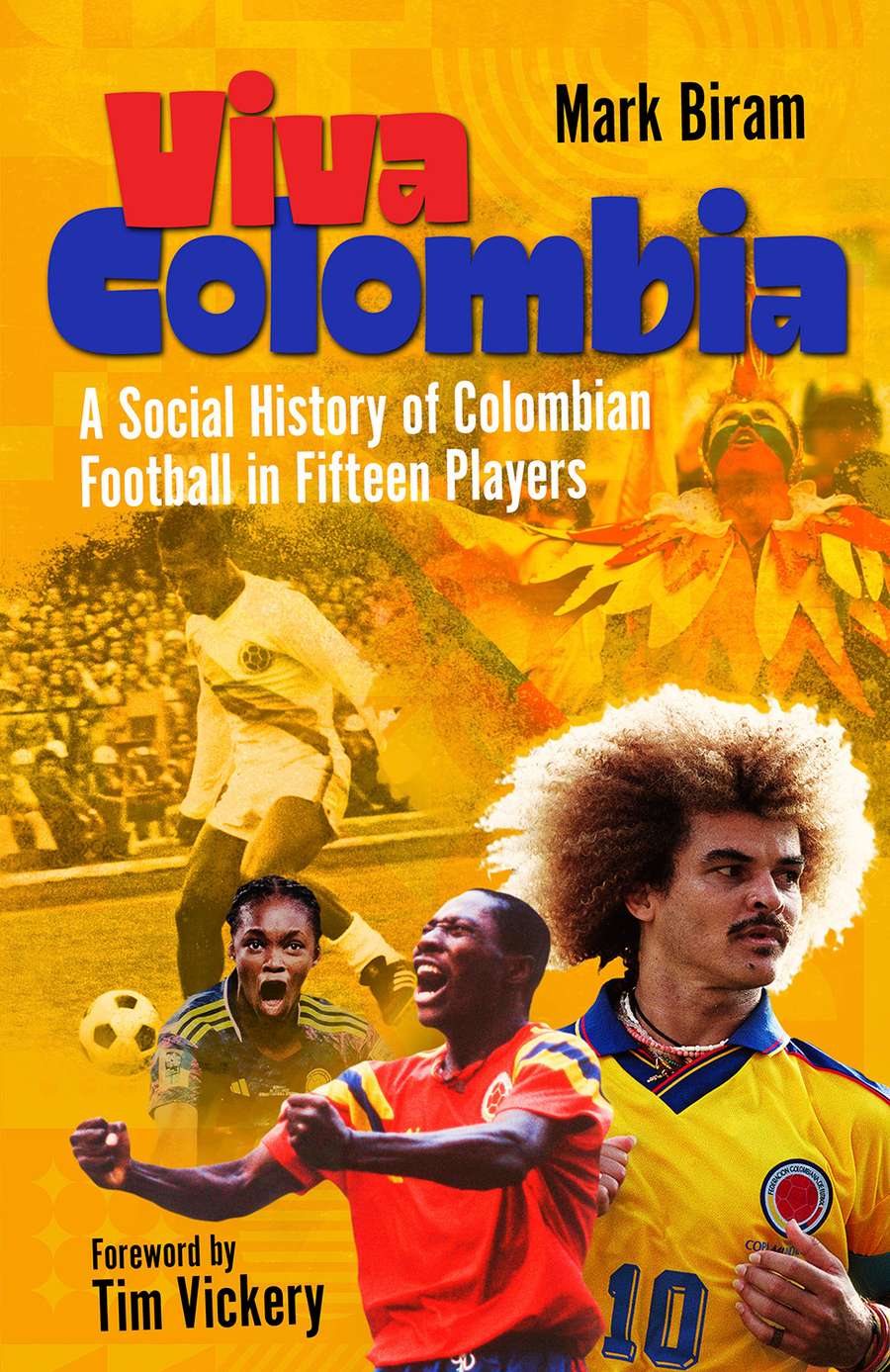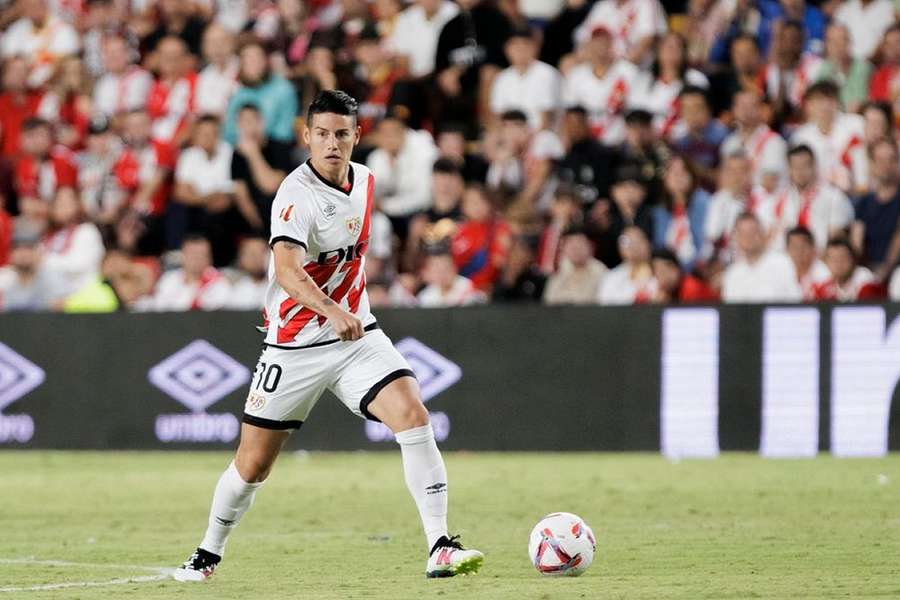“Well, I guess no-one expected Denmark to win the European Championship, did they?” he deadpans a sentiment to which it is hard to disagree. But how about winning a Copa America on foreign soil first?
“That’s true, their sole Copa America title does come with this huge asterisk next to it. The Argentinians wouldn't travel because they were worried about the security situation in Colombia. Brazil had five or six of their best players missing, so a lot of Colombians don't really see it as a proper Copa America,” Mark Biram concedes while nevertheless sticking to his prophecy of a World Cup triumph.
“In a knockout tournament, things can sometimes just come together,” which is true but he is perhaps also a little biased. Mark Biram is out with a new book, “Viva Colombia – A Social History of Colombian Football in 15 Players” and if stories of South American football tickles your fancy, look no further for a great Christmas gift for Santa to bring in his bag.
Just think of a chapter on the ever-engaging René Higuita. When Colombia rocked up in Italy for the World Cup in 1990, they did so with a host of soon to become legendary players and a thrilling style of football. Not least Higuita with a take of being a goalkeeper which led to the German press calling him a charlatan, no less.
“I suppose it speaks to how offended they were by the way he was playing. I think the interesting thing with the way Higuita plays is how many times does he actually get caught out? Of course, we know in that World Cup he does get caught out but in his entire career he barely ever gets caught out and that's quite an achievement, really.”
All part of the tactics
What was viewed upon by most spectators then as the acts of a madman, “Viva Colombia” depicts how the style was actually embraced by coach Francisco Maturana and part of the team tactics. Not included in the book as one of the 15 players, Maturana takes up a chapter as well, since he was the brain behind bringing Colombian football into our world. Prior to Italia ’90 their sole World Cup participation was in 1962. A mind-boggling fact for a country the size of UK, Germany and metropolitan France put together and a country that’s produced a host of marvelous footballers since the late 80s.
But going back to René Higuita who is a controversial figure to say the least; how do Colombians look upon the man who performed the famous scorpion kick at Wembley?
“Colombians would probably be more likely to have a positive opinion of him, perhaps depending on where you are on the social class ladder. People from the upper class might take a snooty attitude towards him, and some of the stuff he did off the pitch was stupid. He got involved in the rescue of a kidnapping and was given this sum of money from dubious sources as a thank you. He should have known that that was going to come back on him,” says Mark Biram, who has lived in Colombia for periods of varying lengths, but now finds himself in Ankara, teaching at the university.
A book on social history of Colombia experienced through 15 footballers obviously has a chapter devoted to Andres Escobar. Including the amazingly ignorant interview given to the Fifa website by John Harkes who featured for the US in their win against Colombia at the World Cup in 1994.
“There's definitely an event or two that didn't seem to come into his analysis,” as Mark Biram underplays it. “I suppose Fifa probably asked him what it meant for the US, but even if you've only got one or two minutes, you could make a more subtle, more rounded statement than what he did.”
El Pipe the greatest ever
The own goal against the US cost Andres Escobar his life and it’s the strongest chapter in the book which also includes three female players. So, what kind of thought process went into the selection of the 15 players?
“One big advantage with Colombia compared to say Brazil or Argentina is that their first World Cup was in ’62. Colombia really first made a mark from ‘90 onwards. If you asked a lot of Colombians, they would at least name 10 of those 15 in the book. I asked a few Colombians and they also named players like Juan Pablo Angel and Hamilton Ricard, and I don't think they're even household names in their own homes, so I tried to stick with the players that I felt had made a real impact.”
With the sample size of female footballers being considerably smaller than their male counterparts, Mark Biram knew it could be viewed as controversial to include no less than three. Though this may look like madness, yet there is a method in it.
”When I was in the first stages of writing the book, I was thinking about the last Women's World Cup where Colombia got to the quarterfinals, which matches what the men have done once. They could very easily have knocked England out and got to the semifinals of a World Cup in women's football. That would have been just incredible because there's been so little institutional support for the women’s game in Colombia. It's just grown organically in a really interesting way. They've had everything against them and they've managed to get to the same stage of a World Cup as the men's team. I wanted to acknowledge what's been achieved.”
One male player standing out is of course the great Carlos Valderrama and Mirk Biram reckons most Colombians would still point to “El Pipe” when choosing the best ever Colombian footballer.
“James Rodriguez is an extremely talented player but in interviews he has said things like, ‘I'm definitely in the top three’. That has actually got him in the bad books with people who have been like, ‘come on, have some respect. You're not even good enough to carry Valderama's bags’. Valderama is seen as a humble guy; he doesn't go around telling everybody that he's amazing. People just think he is.”
Mark Biram’s “Viva Colombia – a Social History of Colombian Football in 15 Players” is out now with Pitch Publishing. It can be purchased on their website, at assorted bookshops or right here.

